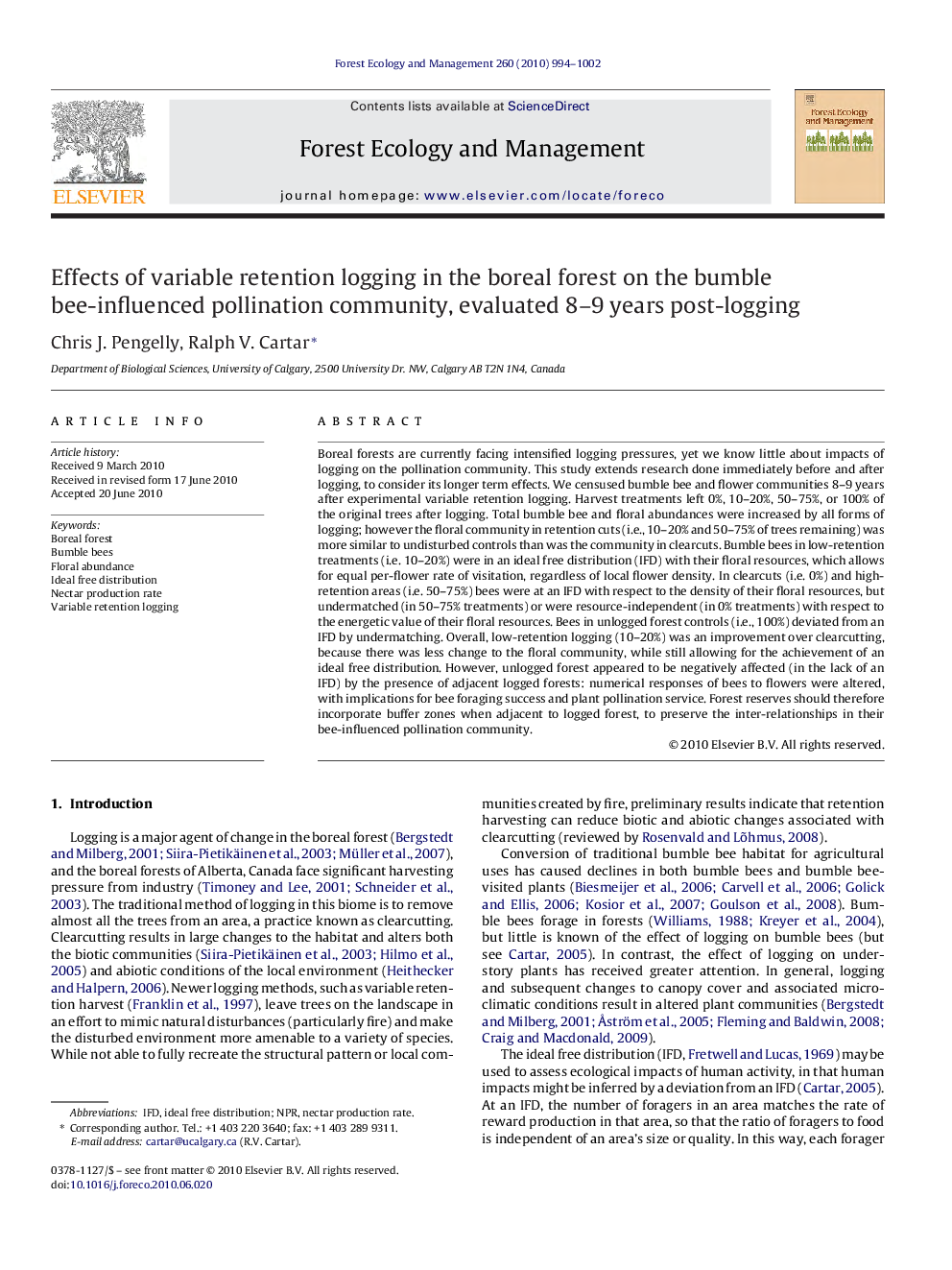| Article ID | Journal | Published Year | Pages | File Type |
|---|---|---|---|---|
| 88425 | Forest Ecology and Management | 2010 | 9 Pages |
Boreal forests are currently facing intensified logging pressures, yet we know little about impacts of logging on the pollination community. This study extends research done immediately before and after logging, to consider its longer term effects. We censused bumble bee and flower communities 8–9 years after experimental variable retention logging. Harvest treatments left 0%, 10–20%, 50–75%, or 100% of the original trees after logging. Total bumble bee and floral abundances were increased by all forms of logging; however the floral community in retention cuts (i.e., 10–20% and 50–75% of trees remaining) was more similar to undisturbed controls than was the community in clearcuts. Bumble bees in low-retention treatments (i.e. 10–20%) were in an ideal free distribution (IFD) with their floral resources, which allows for equal per-flower rate of visitation, regardless of local flower density. In clearcuts (i.e. 0%) and high-retention areas (i.e. 50–75%) bees were at an IFD with respect to the density of their floral resources, but undermatched (in 50–75% treatments) or were resource-independent (in 0% treatments) with respect to the energetic value of their floral resources. Bees in unlogged forest controls (i.e., 100%) deviated from an IFD by undermatching. Overall, low-retention logging (10–20%) was an improvement over clearcutting, because there was less change to the floral community, while still allowing for the achievement of an ideal free distribution. However, unlogged forest appeared to be negatively affected (in the lack of an IFD) by the presence of adjacent logged forests: numerical responses of bees to flowers were altered, with implications for bee foraging success and plant pollination service. Forest reserves should therefore incorporate buffer zones when adjacent to logged forest, to preserve the inter-relationships in their bee-influenced pollination community.
Research highlights▶ Logging altered flower and bee communities, increasing alpha diversity of both. ▶ Intermediate levels of logging produced intermediate flower and bee communties. ▶ Bees were at an ideal free distribution relative to their flowers in 10–20% treatment. ▶ Bees were not at an ideal free distribution relative to their flowers in unlogged areas. ▶ To protect pollination relationships, forests need adequate buffer zones when near logging.
